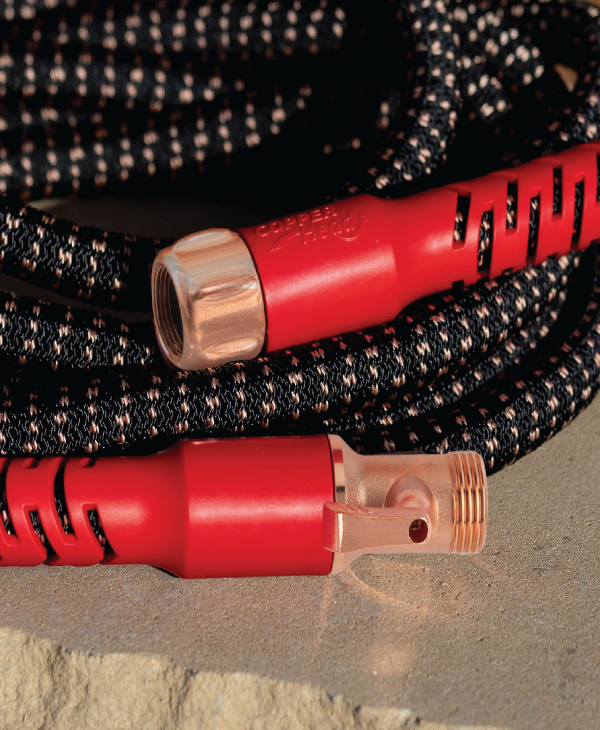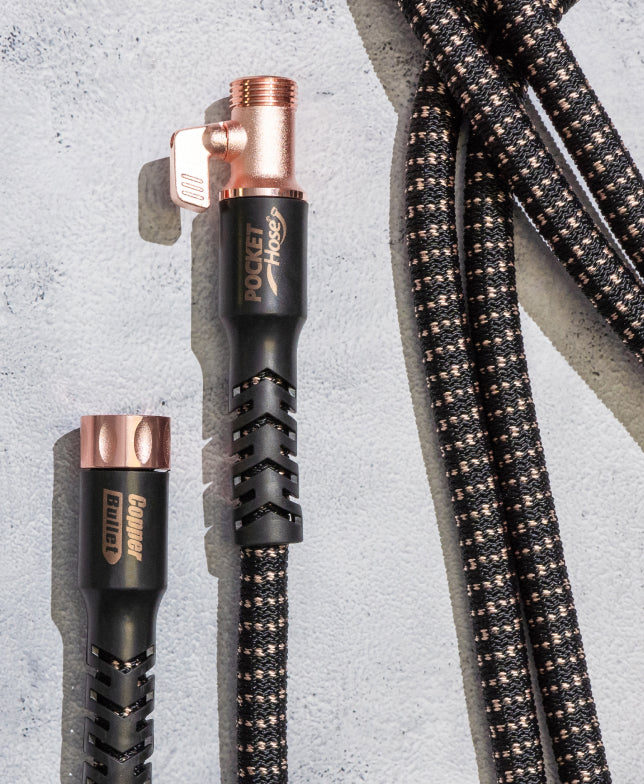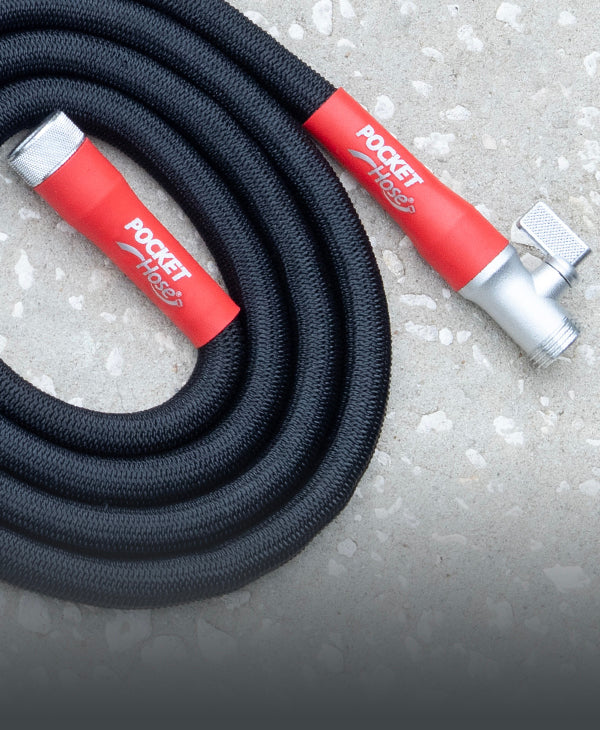As the cooler months dawn upon us, it’s easy to think that gardening should halt until spring. However, nothing could be further from the truth. Winter gardening is not only possible but can also be incredibly rewarding. With the proper selection of winter garden plants, you can create a vibrant winter garden that will flourish despite the cold. Gardening in winter may require some adjustments and preparation, but the result can be truly stunning. Plus, with tools like the Pocket Hose Copper Bullet, keeping your winter garden plants hydrated becomes a breeze despite the chilling temperatures.
In this comprehensive guide, we’ll dive into cold-weather gardening and explore the best plants for winter that will add color, texture, and life to your garden. Whether you are a seasoned gardener looking to expand your horizons or a beginner eager to try winter gardening, plenty of options ensure your garden remains vibrant and inviting all year round.
Importance of Winter Gardening
Winter gardening offers many benefits beyond keeping your garden attractive. Here are some of the main advantages:
- Ecosystem Support: Winter plants provide food and shelter for wildlife, including birds, insects, and small mammals. This support contributes to a healthy and balanced ecosystem.
- Soil Health: Planting cover crops or winter-specific plants helps protect the soil from erosion and nutrient depletion. These plants can also improve soil structure and fertility.
- Year-Round Aesthetics: A well-planned winter garden can be just as beautiful as a summer garden, offering a different yet equally pleasing aesthetic appeal.
- Gardening Enjoyment: Gardening in winter gives you a sense of accomplishment and provides a therapeutic and enjoyable pastime even during the colder months.
Tips for Successful Winter Gardening
Before we look at the best plants for winter, here are some tips to help ensure success in your cold-weather gardening endeavors:
- Know Your Planting Zone: Understanding your area's hardiness zone will help you select plants that are likely to thrive in your winter garden. The USDA Plant Hardiness Zone Map is a great resource.
- Prepare the Soil: Good soil preparation is crucial in winter gardening. Ensure your soil has adequate drainage to prevent waterlogging, and consider adding compost to enrich the soil.
- Mulching: Applying a layer of mulch around your plants can help insulate the roots, retain soil moisture, and suppress weed growth.
- Protection from Harsh Weather: Protective covers, like row covers or cold frames, shield sensitive plants from extreme cold and frost.
- Watering: Even in winter, plants need water. The Pocket Hose Copper Bullet is an excellent tool for this job. It’s lightweight, easy to handle even in cold weather, and expands to provide sufficient reach.
- Pruning: Regularly prune winter plants to maintain shape and encourage healthy growth.
Best Plants for Winter
Here are some of the top winter garden plants that can add vibrancy, color, and texture to your garden.
1. Winter Jasmine (Jasminum nudiflorum)

Winter jasmine is a standout plant for cold-weather gardening. Its bright yellow flowers bloom from January to March, providing a cheerful splash of color. This deciduous shrub is easy to grow and can be trained to climb walls or fences.
Care Tips:
- Hardiness Zone: 6-10
- Light: Full sun to partial shade
- Soil: Well-drained soil
- Water: Moderate watering
2. Hellebores (Helleborus)

Also known as Christmas Roses or Lenten Roses, hellebores are beloved for their winter blooms. These perennials have striking flowers ranging from white and pink to deep purple, often with speckled patterns. Their leathery, evergreen foliage adds texture and interest to the garden.
Care Tips:
- Hardiness Zone: 4-9
- Light: Partial to full shade
- Soil: Rich, well-drained soil
- Water: Keep the soil consistently moist
3. Winterberry (Ilex verticillata)

Winterberry is a deciduous holly that loses its leaves in winter, revealing clusters of bright red berries that persist throughout the season. These berries are a valuable bird food source, adding color and ecological value to your winter garden.
Care Tips:
- Hardiness Zone: 3-9
- Light: Full sun to partial shade
- Soil: Moist, acidic soil
- Water: Keep the soil evenly moist
4. Snowdrops (Galanthus nivalis)

Snowdrops are among the first flowers to bloom in late winter or early spring, often pushing through snow-covered ground. Their delicate, nodding white flowers are a delightful sight and can naturalize to form beautiful drifts over time.
Care Tips:
- Hardiness Zone: 3-8
- Light: Partial to full shade
- Soil: Moist, well-drained soil
- Water: Keep the soil consistently moist
5. Ornamental Kale and Cabbage (Brassica oleracea)

Ornamental kale and cabbage are popular for winter gardens due to their vibrant, colorful foliage in purple, pink, and white shades. These hardy annuals can withstand frost and snow, making them perfect for adding bold color to your garden beds or containers.
Care Tips:
- Hardiness Zone: Annual, but can survive in zones 2-11 during winter months
- Light: Full sun to partial shade
- Soil: Fertile, well-drained soil
- Water: Moderate watering
6. Camellias (Camellia japonica and Camellia sasanqua)

Camellias are beloved for their stunning, rose-like blooms from late fall through early spring. These evergreen shrubs have glossy, dark green leaves that provide year-round interest. They are available in various colors, including red, pink, and white.
Care Tips:
- Hardiness Zone: 7-9 (C. japonica), 7-10 (C. sasanqua)
- Light: Partial shade
- Soil: Acidic, well-drained soil
- Water: Keep the soil consistently moist
7. Heather (Erica carnea)

Heather is a low-growing evergreen shrub that produces small, bell-shaped flowers in colors ranging from white and pink to purple. It blooms from late winter into spring and is an excellent ground cover for adding color and texture to your winter garden.
Care Tips:
- Hardiness Zone: 5-7
- Light: Full sun
- Soil: Acidic, well-drained soil
- Water: Moderate watering
8. Winter Pansies (Viola x wittrockiana)

Winter pansies are cold-hardy annuals that can bloom throughout the winter and into early spring. Their cheerful, multicolored flowers can withstand frost and provide a burst of color in garden beds or containers.
Care Tips:
- Hardiness Zone: Annual, commonly grown in zones 4-8
- Light: Full sun to partial shade
- Soil: Fertile, well-drained soil
- Water: Keep the soil consistently moist
9. Cyclamen (Cyclamen coum)

Cyclamen is a charming plant that blooms in late winter or early spring. Its small, vibrant flowers in shades of pink, red, and white are complemented by attractive heart-shaped leaves with silver patterns. Cyclamen is perfect for shaded areas of the garden.
Care Tips:
- Hardiness Zone: 5-9
- Light: Partial to full shade
- Soil: Well-drained soil
- Water: Water sparingly, allowing the soil to dry slightly between waterings
10. Dogwood (Cornus)

Dogwood trees and shrubs are known for their striking winter bark and colorful stems in red, yellow, and orange shades. They add dramatic color to the winter landscape and can also produce small, fragrant flowers in early spring.
Care Tips:
- Hardiness Zone: 2-9 (varies by species)
- Light: Full sun to partial shade
- Soil: Moist, well-drained soil
- Water: Keep the soil consistently moist
11. Mahonia (Mahonia x media)

Mahonia, also known as Oregon grape, is an evergreen shrub with spiky, holly-like leaves and clusters of bright yellow flowers that bloom in late winter. Clusters of bluish-black berries follow the flowers, adding further visual interest.
Care Tips:
- Hardiness Zone: 7-9
- Light: Partial shade to full shade
- Soil: Moist, well-drained soil
- Water: Moderate watering
12. Witch Hazel (Hamamelis)

Witch hazel is a deciduous shrub that blooms in late winter, producing fragrant, spidery flowers in shades of yellow, orange, or red. The flowers appear on bare branches, strikingly contrasting the winter landscape.
Care Tips:
- Hardiness Zone: 3-9 (varies by species)
- Light: Full sun to partial shade
- Soil: Moist, well-drained soil
- Water: Keep the soil consistently moist
Tools for Winter Gardening
Proper tools are essential to make winter gardening more efficient and enjoyable. One highly recommended tool is the Pocket Hose Copper Bullet. This hose is perfect for cold-weather gardening as it is lightweight, portable, and easy to maneuver, even in low temperatures. The Copper Bullet's unique design ensures it won’t kink or tangle, making it an excellent choice for keeping winter plants watered with minimal hassle.
Benefits of the Pocket Hose Copper Bullet:
- Portability: The hose is lightweight and easy to carry around the garden.
- Durability: The copper design adds durability and prevents damage from cold weather.
- Ease of Use: The hose expands when filled with water and contracts when not in use, making storage simple and space-efficient.
- No Kinking: The design prevents frustrating kinks and tangles, ensuring a steady water flow.
Final Thoughts
Winter gardening can be a delightful and rewarding experience when choosing the right garden plants. From the vibrant blooms of hellebores and cyclamen to the colorful foliage of ornamental kale and the striking stems of dogwood, there are plenty of options to create a vibrant winter garden. By following the tips for successful cold-weather gardening and using reliable tools like the Pocket Hose Copper Bullet, you can ensure that your garden remains a beautiful and thriving oasis even in the coldest months.
Whether you aim to support local wildlife, maintain soil health, or simply enjoy the beauty of nature year-round, winter gardening offers endless possibilities. As you explore and experiment with different plants, you’ll discover the unique joy and beauty that a vibrant winter garden can bring.
Happy winter gardening!





Leave a comment
This site is protected by hCaptcha and the hCaptcha Privacy Policy and Terms of Service apply.